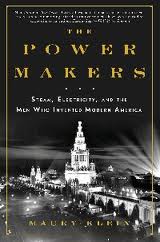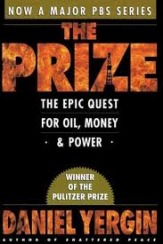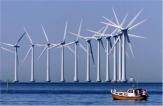 All over the developing world, ultra-modern megacities are being built. In Egypt, two new megacities are rising from the desert about 20 miles outside Cairo because city planners have deemed the existing city center to be " overtaxed beyond repair." In the Philippines, a new " Global City" with modern high rises, shopping centers, and hospitals has sprung up on the high ground of a former military base near the existing business center. These new, modern cities are essential. As reported in an earlier post, more than 5 billion people, or 60% of the world's population, will live in cities by 2030 -- and many of those cities will have populations in excess of 25 million people. Unless we build new infrastructure and even new cities, the pollution and waste generated by megacities will literally kill millions of people. The problem is what we are leaving behind. Critics of the new cities say they are only for small populations of the rich, while tens of millions of poor people will be left behind in the old cities. Without investments in the old cities, they will turn into massive shantytowns as the existing infrastructure decays. Critics see a future not all that different than the animated movie Wall-E, where all the humans left earth to live on a space ship because cities had become massive garbage dumps surrounded by decaying infrastructure. It turns out in real life that we have enough vacant space outside existing cities so we need not move to outer space. We are just moving 20 miles outside the existing cities instead. The impacts of cities, however, have never been contained within their geographic boundaries. Throughout history, cities have influenced the culture, politics, and commerce of entire nations. That is as true today in the internet age as it was at the dawn of civilization. (My recent-college-graduate son, for example, is considering employment opportunities in the web-based video game industry. All the job offers are in either New York City or Irvine, California, and none allow telecommuting. It appears that even those who spend most of their waking hours in virtual worlds on the internet want to physically live and work in the same city as everyone else working on their virtual worlds.) Cities also have tremendous impacts on a nation's ecology. Highly efficient housing, energy, waste disposal, and mass transportation systems can dramatically reduce pollution not only within a city, but also throughout a region and across national boundaries. On the other hand, inadequate housing, energy, waste disposal, and transportation systems result in increased pollution that create health risks to everyone who shares the air, groundwater, rivers, streams, lakes and oceans. Even if they live 20 miles or more away. These new, ultra-modern cities are a step in the right direction. They will provide more efficiency in energy, housing, waste disposal, and transportation. It just makes no sense to build them if we are going to ignore the environmental catastrophes that will develop in forgotten urban wastelands 20 miles down the road. John Howley Orlando, Florida
What will it take to create a clean and sustainable energy industry that can replace, or at least significantly reduce, our reliance on dirty oil and coal? Two excellent books about the history of oil and electricity suggest that technological breakthroughs will only get us halfway there. We also need a fundamental shift in government policies, incentives, and investments.
 In The Power Makers: Steam, Electricity, and the Men Who Invented Modern America, Maury Klein tells the story of Fulton, Edison, Westinghouse, and less well known, but equally brilliant men who built an energy infrastructure that powered the modernization of industry and continues to power our energy-intensive businesses, industries, and lifestyles today. This is a fascinating story on many levels. Professor Klein describes the many technological breakthroughs from the invention and refinement of steam engines and turbines to the development of power plants and transmission grids that fit together like a complex jigsaw puzzle to create the modern electric utilities we know today. Along the way, he provides clear, understandable descriptions of the essential science and technology. Professor Klein also explains why Edison and Westinghouse achieved great commercial success while other equally brilliant scientists and inventors such as Tesla faded into obscurity. The commercially successful innovators combined technological brilliance with the fine arts of raising money in private capital markets, procuring government contracts and subsidies, pursuing intellectual property lawsuits, mastering (and often influencing) a maze of new and changing government regulations, and of course self-promotion and public relations. Their successes provide important lessons for those of us working to build a clean and sustainable energy industry today.
 Similar insights are found on every page of Daniel Yergin's Pulitzer Prize winning book, The Prize: The Epic Quest for Oil, Money, and Power. From modest beginnings capturing oil oozing from the ground in Pennsylvania to modern-day deepwater wells thousands of feet below oceans, the story of petroleum is one of both technological advances and government policy. The early oil trusts concentrated power and control to make massive and risky investments in oil wells and the infrastructure needed to refine the oil and transport it to market. Over time, however, that concentration of economic power threatened to harm the economy and cause innovation to stagnate. After Standard Oil was broken up as a result of President Teddy Roosevelt's antitrust suits, big oil did not weaken and wither. To the contrary, the new competition between what became 7 major oil companies actually strengthened the oil industry. When we look at government energy policies today, it is important to remember the critical role that government policies and investments have played -- and continue to play -- in the business of oil and electricity. Big Oil is what it is today because of many government decisions from the construction of a national highway system to foreign policy decisions in the Middle East. In like manner, renewable energy will be defined not just by technological advances, but also by government policies and investments in basic infrastructure. Both of these books read like Tom Clancy novels, with exciting characters who come to life and great technical details that are clear, accurate, and do not put you to sleep. Only these stories are 100% true and hold critical lessons for those of us who want to replicate the successes of dirty energy with clean and renewable alternatives. John Howley Orlando, Florida
 Recently we switched our New Jersey home to a third party electricity supplier that gives customers a choice of either 20% or 100% wind power -- and that charges about 10% to 15% less per kwh than the utility's rates. This is one of the little known benefits of energy deregulation. In many states, the delivery of electricity has been separated from the supply. Our utility company still provides delivery, service, emergency repairs, customer support and a single bill, but we can choose a third party for the supply portion of our bill. With supply opened up to competition, third party suppliers are competing for our business by providing electricity that is greener and less expensive. It is similar to when long distance companies competed with one another after phone services were deregulated. We quickly understood the financial impact of our choice when our electric bill went down, but I wasn't really sure about the "greenness" of the electricity. Was this just a marketing gimmick? After all, it's not as if the specific watts that find their way to our home can be identified as wind generated. The utility and the third party suppliers push all their electricity onto the same grid, and by the time it reaches our home you cannot distinguish between the watt generated by a dirty coal-fired plant and the nice, clean wind power that we bought. In fact, depending on the time of day, overall demand on the system, and strength of the wind, most of the electricity powering our home could be "dirty." So, does it matter that we signed up and paid for 100% Green-E certified renewable power? Yes. Because over time the demand created by people choosing renewable electricity will require more of it. Watts, volts, and amps can be difficult to comprehend, so let me explain by analogy to something more tangible. Consider a car dealership that carries an inventory of 80 gas guzzling SUVs and 20 hybrids. If 8 out of 10 customers continue to buy the less fuel efficient SUVs, then the dealership will continue to replenish its inventory with 80% gas guzzlers and only 20% hybrids. Now consider what will happen if 8 out of 10 customers start buying hybrids. The car dealer does not want to lose money. It will start to rebalance its inventory with more of the fuel efficient hybrids and fewer of the gas guzzlers. Which will cause the manufacturers to start producing more hybrids and fewer gas guzzlers. The same thing can happen with electricity. If enough of us start choosing clean, renewable electricity, then more wind, solar, hydro, and geothermal plants will have to be built to meet the demand. To help make that happen, we decided to promote the company that provides our home's clean, green electricity supply. We will earn a small referral fee whenever anyone signs up for the service through our web site and, more importantly, we will do our small part to increase the demand for clean and renewable energy. If you live in New Jersey, Pennsylvania, Connecticut, or Maryland, you can click here to find out how much it will cost (actually, how much you will save) by switching to either 20% or 100% clean, renewable electricity. New Yorkers should be able to take advantage of this in a month or so, with Massachusetts and Illinois not far behind. You can also check with your utility or state regulatory agency to find the names of other third party suppliers. With a little collective action that costs us nothing, and can actually reduce our electric bills, we can promote a cleaner and greener energy future. John Howley Woodbridge, New Jersey
 The US added 10 Gigawatts of new wind power generation in 2009. Texas led the way with 2,239 Megawatts but 27 other states also added to their wind generation capacity last year. Four US states now generate more than 10% of their electricity from wind power. Iowa gets 20% of its electricity from wind, followed by South Dakota (13%), North Dakota (12%) and Minnesota (11%). “Wind power projects accounted for 39 percent of all new electric generating capacity added in the U.S. in 2009," noted Ryan Wiser, a scientist at Lawrence Berkeley National Laboratory, "and wind energy is now able to deliver 2.5 percent of the nation’s electricity supply.” Berkeley Labs and the US Department of Energy released a study last week with more details on the state of wind power in the US. Investments in wind power are creating good manufacturing jobs in the US. Seven of the top ten wind turbine manufacturers already have manufacturing facilities in the US. Two of the remaining 3 have announced plans to open manufacturing facilities here. And, of course, the actual installation and ongoing management of wind turbines create domestic jobs. Wind power also creates competitive advantages for manufacturers by lowering electricity rates over the long term. While the up front investment is high (construction of wind farms costs about twice as much per MW as construction of coal-fired power plants), wind and other renewables are less expensive over the long term because they have zero ongoing fuel costs. This advantage will become even more pronounced if, as predicted by many economists, the costs of coal, petroleum and natural gas increase dramatically as the world economy comes out of the Great Recession. Transmission remains a significant stumbling block. In Texas, 17% of existing wind generating capacity was not used last year because of inadequate transmission. Billions of dollars in investments in smart grid technologies will be required to pave the way for more wind and solar generation. (See DOE Says Grid Needs Upgrade to Handle Wind Power, Jan. 20, 2010). The US accounted for 26% of all new wind generating capacity in the world last year. That put the US in second place after China, which accounted for 36% of all new wind generation capacity and is the world leader. John Howley Orlando, Florida
|





 RSS Feed
RSS Feed